Apoidea
Bees, digger wasps
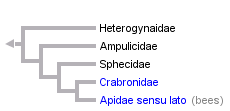


This tree diagram shows the relationships between several groups of organisms.
The root of the current tree connects the organisms featured in this tree to their containing group and the rest of the Tree of Life. The basal branching point in the tree represents the ancestor of the other groups in the tree. This ancestor diversified over time into several descendent subgroups, which are represented as internal nodes and terminal taxa to the right.

You can click on the root to travel down the Tree of Life all the way to the root of all Life, and you can click on the names of descendent subgroups to travel up the Tree of Life all the way to individual species.
For more information on ToL tree formatting, please see Interpreting the Tree or Classification. To learn more about phylogenetic trees, please visit our Phylogenetic Biology pages.
close boxReferences
Alexander, B. 1990. A preliminary phylogenetic analysis of sphecoid wasps and bees. Sphecos 20: 7-16.
Alexander, B. 1992. An exploratory analysis of cladistic relationships within the superfamily Apoidea, with special reference to sphecid wasps. Journal of Hymenoptera Research 1: 25-61.
Brothers, D. J. 1999. Phylogeny and evolution of wasps, ants and bees (Hymenoptera, Chrysidoidea, Vespoidea and Apoidea). Zoologica Scripta 28 (1-2): 233-249.
Engel, M. S. 2001. A monograph of the Baltic Amber bees and evolution of the Apoidea (Hymenoptera). Bulletin of the American Museum of Natural History 259: 1-192.
Finnamore, A. T. 1993. Series Spheciformes. In: Goulet, H. & Huber, J. T. (Eds). Hymenoptera of the World: an Identification Guide to Families. pp. 280-306, Research Branch, Agriculture Canada, Ottawa.
Krombein, K. V. 1979. Superfamily Sphecoidea. In: Krombein, K. V., Hurd, P. D. Jr., Smith, D. R. & Burks, B. D. (Eds.). Catalog of Hymenoptera in America North of Mexico (Volume 2, pp. 1573-1740J). Smithsonian Institution Press, Washington D.C.
Lomholdt, O. 1982. On the origin of the bees (Hymenoptera: Apidae, Sphecidae). Entomologica Scandinavica 13: 185-190.
Melo, G. A. R. 1997. Phylogenetic Relationships and Classification of the Major Lineages of Apoidea (Hymenoptera), with Emphasis on the Crabronid Wasps. Unpublished doctoral Dissertation, University of Kansas, Lawrence.
Menke, A. S. 1997. Family-group names in Sphecidae (Hymenoptera: Apoidea). Journal of Hymenoptera Research 6: 243-255.
Title Illustrations

| Scientific Name | Podalonia |
|---|---|
| Location | United States |
| Specimen Condition | Live Specimen |
| Source | #5138033 |
| Source Collection | Bugwood Network/Forestry Images |
| Image Use |
 This media file is licensed under the Creative Commons Attribution License - Version 3.0. This media file is licensed under the Creative Commons Attribution License - Version 3.0.
|
| Copyright | © Susan Ellis |
| Scientific Name | Bombus impatiens |
|---|---|
| Specimen Condition | Live Specimen |
| Behavior | feeding on goldenrod |
| Source | #2107025 |
| Source Collection | Bugwood Network/Forestry Images |
| Image Use |
 This media file is licensed under the Creative Commons Attribution-NonCommercial License - Version 3.0. This media file is licensed under the Creative Commons Attribution-NonCommercial License - Version 3.0.
|
| Copyright | © David Cappaert |
| Scientific Name | Philanthus sp. and Polygonum cuspidatum |
|---|---|
| Location | Boulevard Park, Seattle, Washington, United States |
| Specimen Condition | Live Specimen |
| Behavior | Nectaring on Japanese Knotweed, Polygonum cuspidatum |
| Sex | Female |
| Source | Beewolf - Philanthus species |
| Source Collection | Flickr |
| Image Use |
 This media file is licensed under the Creative Commons Attribution-NonCommercial License - Version 2.0. This media file is licensed under the Creative Commons Attribution-NonCommercial License - Version 2.0.
|
| Copyright | © 2007 Cheryl Moorehead |
About This Page
Page copyright © 1995
All Rights Reserved.
Citing this page:
Tree of Life Web Project. 1995. Apoidea. Bees, digger wasps. Version 01 January 1995 (temporary). http://tolweb.org/Apoidea/11190/1995.01.01 in The Tree of Life Web Project, http://tolweb.org/




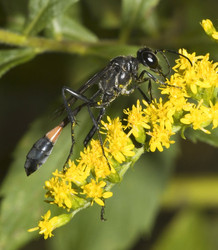
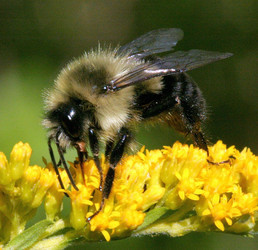
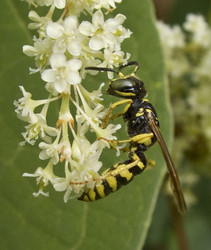

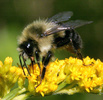


 Go to quick links
Go to quick search
Go to navigation for this section of the ToL site
Go to detailed links for the ToL site
Go to quick links
Go to quick search
Go to navigation for this section of the ToL site
Go to detailed links for the ToL site